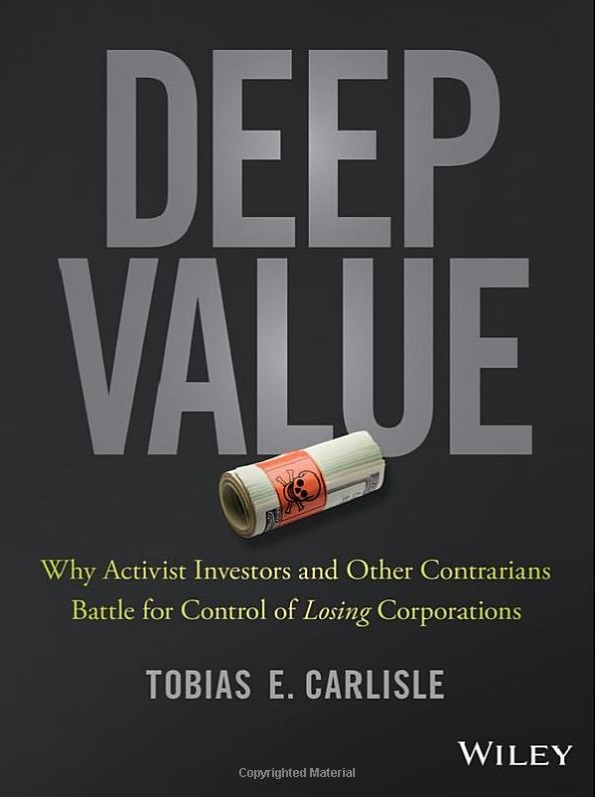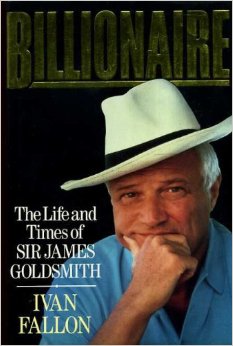Author Background:
Tobias Carlisle lives in Santa Monica, CA where he is the founder and portfolio manager of Eyquem Investment Management LLC.
He is best known as the author of the well regarded website Greenbackd.com, the book Deep Value: Why Activists Investors and Other Contrarians Battle for Control of Losing Corporations, and Quantitative Value: A Practitioner’s Guide to Automating Intelligent Investment and Eliminating Behavioral Errors. He has extensive experience in investment management, business valuation, public company corporate governance, and corporate law.
Prior to founding Eyquem in 2010, Tobias was an analyst at an activist hedge fund, general counsel of a company listed on the Australian Stock Exchange, and a corporate advisory lawyer. As a lawyer specializing in mergers and acquisitions he has advised on transactions across a variety of industries in the United States, the United Kingdom, China, Australia, Singapore, Bermuda, Papua New Guinea, New Zealand, and Guam. He is a graduate of the University of Queensland in Australia with degrees in Law and Business Management.
Toby’s Book Recommendation:
Audio Podcast:
Other ways to listen:
* On iTunes
* Right Click + Save As to download as an MP3
* Stream here directly
With gratitude,
Transcript:
Jake: Welcome to Five Good Questions. I’m your host, Jake Taylor. My guest today is Tobias Carlisle.
Toby is the Founder and Managing Director of Eyquem Capital. He’s the author of multiple books as well as a website called the Greenbackd which is very popular at value investing circles. Prior to founding his own firm, Toby was an analyst at a hedge fund as well as a corporate attorney.
Today we’re going to be talking to him about his book, Deep Value. Let’s ask him Five Good Questions.
Hi everybody! Today with me I have Tobias Carlisle. Toby, where are we talking to you from today?
Toby: I’m in Santa Monica, California at Eyquem global headquarters.
Jake: Oh, nice. Looks good. Well let’s jump right in to our five questions for you. Our first question.
Toby: Right.
Jake: What about your background gives you unique insight about activist investing?
Toby: I started out as an attorney. I was a corporate advisory attorney for about eight years. Part of that is mergers and acquisitions, capital raising. That’s pretty bread and butter work.
More unusual was the sort of activist defense when you get activists taking positions to try to get something unusual to happen in the company, getting them to pay a special dividend. And I’ve read Security Analysis by that stage. But I didn’t really understand why the activists could see value because all of these companies were in the doldrums really deep and in the middle of a slump. And it sort of pushed me to try and understand what it was about these companies that they thought that they could… what value they thought they could extract.
So, I moved in-house for a little while. And I met an activist while I was in-house. And after I left as general counsel of this company, I worked for a period in his activist firm. And it was sort of that was the progression to grinding out Deep Value.
Jake: Nice! So, you’re a big fan of Carl Icahn, I believe. And I didn’t have as much of an appreciation before reading your book about just what kind of a baller Icahn was and still is. Could you give us a little background about him? And why, as an investor, we should look at some of the things that he’s done?
Toby: In many ways, Icahn is an heir to Graham. Buffett was a friend of his or a student of his and worked with him. But Icahn’s strategy is much closer to Graham’s strategy. In the sense that, Graham was looking for companies that were at a fundamental an idea and didn’t necessarily have a good management. Because he felt that in those circumstances he could go in and he could precipitate a change.
Icahn has sort of approached the problem from the same perspective. He’s not necessarily looking for a great business. He’s looking for something that’s in extremis. And the reason is that those are the sort of companies that shareholders are more likely to give up.
So, I think that he’s had to adapt as he’s gone along. He started out with a company called Tappan. And the analysis was that it was $20 in book value against the market price, it was sort of $7.50. And he describes that book value was liquidating value. So it must have been fairly close to liquidation value as we would understand it.
And he bought a big enough position to sort of persuade them to want to take some value enhancing methods. That’s quite distinct from the sort of way that Warren Buffett would approach it; which is to look for the wonderful business accompanied by the first class management.
Jake: Right. At an okay price.
Toby: Right. At a fair price.
Jake: Right. So the next question is, in your book, you talk about the Acquirer’s Multiple. Now, there are all kinds of different multiples that investors use to try to gauge a fundamental value of a company. You know, price to earnings, price to book, price to sales. Why do you focus on the Acquirer’s Multiple and why is that a good one for investors to keep their eye on?
Toby: The Acquirer’s Multiple is my name for a variation of the Enterprise Multiple. And the Enterprise Multiple is a very useful multiple because it approaches the problem of buying a company as if you’re going to take out the entire company and you’re going to be able to manipulate the capital structure. So leveraged buyout firms, private equity firms would do this sort of analysis. And that’s the way value investors are supposed to think about businesses.
But we’re not just looking at the business. We’re looking at the company in its entirety. And the Acquirer’s Multiple looks at the financial statements. It takes a sort of holistic approach to the financial statements. So it looks at balance sheet value.
So on the balance sheet, it’s looking for an excess of cash over debt or a cash-rich balance sheet. And then, there’s a residue of the business that you actually pay for. And for that bit of the business, you want very strong operating earnings and you want those operating earnings to be equivalent to the cash that the company is generating at the same time.
And all of those together, that analysis, is what I describe as the Acquirer’s Multiple. It finds these companies that are undervalued. And that big, institutional type private equity firms, financial sponsors, leveraged buyout firms can come in and take them out. And so, that’s often what happens.
So, when we test it, it doesn’t really matter what definition of enterprise value we use. We can include off-balance sheet liabilities, unfunded pensions, operating leases so we can ignore them. And we can look at various different definitions of operating earnings like EBIT, EBITDA operating earnings or cash flow. It doesn’t matter. Which ever ones we choose, they give broadly the same answer. And that is that, they outperform any other sort of analysis.
Jake: Nice. So, how about for our next question I think that because of everyone’s love of Warren Buffett, and rightfully so; there’s been a focus on return on invested capital. And it makes sense. It’s logical. This company puts out $1 worth of capital into their business and it grows this huge amount and comes back in the door.
Now, one of the most startling things that I came across with your book was this very counterintuitive idea that there’s actually a reversion to the mean in the return that companies get on their invested capital. And so, looking at high ROIC is not always a great situation.
Please tell us more about that and why it’s such a counterintuitive thing.
Toby: The return on invested capital measure is looking for the wonderful company. And the problem with that analysis and we all want our own wonderful companies. There’s no dispute about that. But the way that we identify the wonderful companies in the future is the question, the issue and does a high return on invested capital last year; I mean that next year will be a higher return on invested capital.
And what seems to happen is that it doesn’t. And over a period of 10 years, there seems to be some mean reversion. And the reason is fairly well understood. And that’s in most instances, competition acts to drive down very high returns. Very high returns attract competitors, substitutes. And over a period of time those returns are driven down very low. Return on invested capital companies tend to increase them simply because people leave the industry. They can’t compete anymore. So, not only do the good ones fall but the bad ones improve.
Now, sometimes lost in that statistical analysis is this idea that there is some persistence in some companies. But the issue is that we can’t identify the factors statistically that drive that persistence. All we know is that there are some companies that do have this persistently high return on invested capital. It’s something that Michael Mauboussin has looked at quite frequently over a period of time. And he hasn’t been able to identify the drivers of it perspectively.
That’s not to say that nobody can do it. I think that Buffett and Munger have demonstrated that they certainly can do that. But it’s part of Buffett’s genius that he’s able to find those companies that have the genuine sustainable moat and avoid the ones that don’t.
Jake: Yeah. And so, what would your takeaway for investors be in that case? Is it until you’ve read 10,000 books like Buffett and Munger have? You can’t understand the world well enough to find those sustainable moat and you should instead look towards return on invested capital that might be reverting upward to a mean? I mean, what would be the takeaway from that for investors?
Toby: Well, it’s difficult. For every investor, it’s going to be different. Buffett, part of Buffett’s genius is that he’s read so many financial statements. He says that he reads a number a day. And he has this sort of facility to remember what he’s read that none of us seem to have.
Jake: Right.
Toby: So he’s sort of putting together a lot of information in a way that he’s able to see something that probably most mere mortals can’t. So, that doesn’t necessarily mean that mere mortals shouldn’t attempt to invest that way. The issue is going to be how you approach the idea. I think that there is a place for seeking out those wonderful companies.
If you recognize that the way that they generate really good returns is by getting the very high compounding over a very long period of time. And you just know that you’re going to take some positions that aren’t going to perform like that and you’re going to have some positions that will. If your approach is sort of the more statistical approach, you’d look at eliminating return on invested capital from the assessment and just using the Acquirer’s Multiple. And that seems to give not only better return but better risk-adjusted returns which is the really surprising thing.
I think that’s the thing that most people find the most surprising. It’s the most counterintuitive idea that eliminating one of the factors in a very, very simple analysis already gives you even better returns, better risk-adjusted returns.
Jake: Yeah. That part is pretty crazy. I mean when you look at Greenblatt’s Magic Formula and you have ROIC as one of the factors.
Toby: Right.
Jake: I mean, your research has shown that that’s a tiny factor at all and it’s mostly the price. Basically, buying things that are cheap is the number one driver for a good investment.
Toby: Right. And it is partially the way that the research has been conducted. We’re looking at buying a mix of companies this year and then seeing how they perform over the course of the next year, it may be that a different sort of analysis would yield a different result. I don’t think so. And the reason is that I think that the Microeconomic Theory is so persuasive and that matches sort of my experience. But I don’t think that necessarily means that that wonderful company investments system doesn’t work. They’re certainly going to be these unusually good companies that pop up every now and again. And if you can put some money in it and get the compounding then you should do just fine.
Jake: Life is easy, yeah. Yeah, those are the See’s Candies of the world.
Toby: Right. The problem is always going to be though when you find it, it’s likely that everybody else has found it too.
Jake: Right.
Toby: So you’re going to be paying up for them. But you can occasionally find them.
Jake: I think that might be a good lesson for… I mean, Buffett bought See’s Candies in the early ’70s in a bear market and he paid up for it.
Toby: Right.
Jake: Which there was, I’m sure imagine, a lot of things that were much cheaper statistically.
Toby: Right.
Jake: But he paid up for a good business during a down market and, I mean, it’s produced $1 billion of free cash flow for him to invest over the last 30, 40 years or so.
Toby: You don’t have to get very many of those right.
Jake: No.
Toby: To sort of have this incredible investment record.
Jake: Yeah. You need one See’s Candy, basically, in your life.
Toby: I think that’s true of Graham’s record as well, right? He had –
Jake: Yeah. GEICO.
Toby: An average record but GEICO was the difference between.
Jake: Yeah. Exactly.
Well, Toby, those are our 5 questions that we had time for. I really appreciate you stopping by and I’m looking forward to more books that you put out.
Everybody, check out Deep Value if you want to learn more about what we were talking about today.
Toby: Thanks, Jake. It was very interesting.
Jake: Thanks, Toby.





